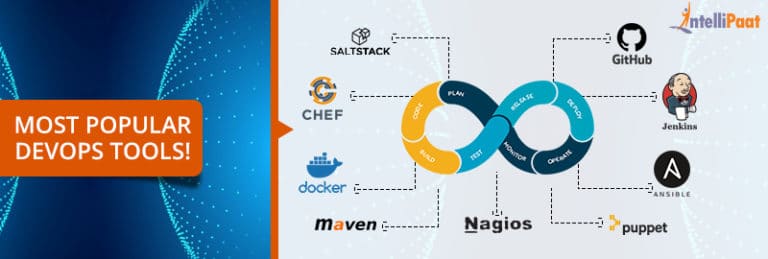In the rapidly evolving landscape of software development, new DevOps tools transforming software delivery have emerged as game-changers. These innovative solutions are designed to streamline processes, enhance collaboration, and accelerate the delivery of high-quality software. By integrating automation, continuous integration, and continuous deployment (CI/CD) practices, organizations can significantly reduce time-to-market while improving overall efficiency. As the demand for faster and more reliable software delivery grows, understanding these tools becomes essential for teams aiming to stay competitive.
In this article, we will delve into the most impactful DevOps tools currently reshaping the software delivery process. You will learn about the key features and benefits of these tools, including how they facilitate better communication between development and operations teams. We will also explore real-world case studies that highlight the successful implementation of these tools, showcasing their potential to drive innovation and productivity.
Furthermore, we will discuss the challenges organizations face when adopting new DevOps tools and provide practical tips for overcoming these hurdles. Whether you are a seasoned DevOps professional or just starting your journey, this article will equip you with valuable insights and actionable strategies. So, keep reading to discover how these transformative tools can elevate your software delivery practices and propel your team towards success.
Continuous Integration and Continuous Deployment (CI/CD)
New DevOps Tools Transforming Software Delivery, particularly in the realm of Continuous Integration and Continuous Deployment (CI/CD), have revolutionized how software is developed and delivered. CI/CD tools automate the process of integrating code changes from multiple contributors into a single software project. This automation not only speeds up the development process but also reduces the risk of integration issues, allowing teams to deliver high-quality software more frequently.
With tools like Jenkins, GitLab CI, and CircleCI, developers can set up pipelines that automatically test and deploy code changes. This ensures that any new code is thoroughly vetted before it reaches production, minimizing the chances of bugs and errors. The shift towards CI/CD practices has led to faster release cycles and improved collaboration among development teams, making it a cornerstone of modern software delivery.
Infrastructure as Code (IaC)
New DevOps Tools Transforming Software Delivery have also embraced the concept of Infrastructure as Code (IaC). IaC allows teams to manage and provision infrastructure through code, enabling automation and consistency across environments. Tools like Terraform and AWS CloudFormation facilitate this process, allowing developers to define their infrastructure in a declarative manner.
This approach not only streamlines the deployment process but also enhances scalability and reliability. By treating infrastructure as code, teams can version control their infrastructure configurations, making it easier to track changes and roll back if necessary. IaC is essential for organizations looking to adopt cloud-native architectures and achieve greater agility in their software delivery processes.
Containerization and Orchestration
New DevOps Tools Transforming Software Delivery have significantly benefited from containerization and orchestration technologies. Containers, such as those managed by Docker, encapsulate applications and their dependencies, ensuring consistency across different environments. This portability allows developers to build, test, and deploy applications seamlessly.
Orchestration tools like Kubernetes take container management a step further by automating the deployment, scaling, and operation of application containers. This combination of containerization and orchestration enables organizations to achieve greater efficiency and resource utilization, making it easier to manage complex applications in dynamic environments. As a result, teams can focus more on development and less on infrastructure management.
Monitoring and Observability
New DevOps Tools Transforming Software Delivery emphasize the importance of monitoring and observability in maintaining application performance. Tools like Prometheus, Grafana, and ELK Stack provide insights into application behavior and system health, allowing teams to identify and resolve issues proactively.
Effective monitoring is crucial for ensuring that applications run smoothly in production. By implementing observability practices, organizations can gain a deeper understanding of their systems, leading to improved performance and user experience. This focus on monitoring not only helps in troubleshooting but also aids in capacity planning and resource allocation.
Collaboration and Communication Tools
New DevOps Tools Transforming Software Delivery also include collaboration and communication tools that enhance teamwork across development and operations. Platforms like Slack, Microsoft Teams, and Jira facilitate real-time communication and project management, breaking down silos between teams.
These tools enable better visibility into project progress and foster a culture of collaboration. By integrating communication tools with CI/CD pipelines and monitoring systems, teams can respond quickly to issues and maintain alignment throughout the software delivery lifecycle. This collaborative approach is essential for achieving the speed and efficiency that modern software development demands.
Security Integration in DevOps (DevSecOps)
New DevOps Tools Transforming Software Delivery have increasingly integrated security practices into the DevOps pipeline, giving rise to the concept of DevSecOps. This approach emphasizes the importance of incorporating security measures at every stage of the software development lifecycle, rather than treating it as an afterthought.
Tools like Snyk and Aqua Security help teams identify vulnerabilities early in the development process, allowing for timely remediation. By embedding security into CI/CD pipelines, organizations can ensure that their applications are not only functional but also secure. This proactive stance on security is vital in today’s threat landscape, where cyberattacks are becoming more sophisticated and frequent.
| Tool | Description | Key Features | Benefits |
|---|---|---|---|
| Docker | A platform for developing, shipping, and running applications in containers. |
|
|
| Kubernetes | An open-source system for automating the deployment, scaling, and management of containerized applications. |
|
|
| Terraform | An infrastructure as code tool that allows users to define and provision data center infrastructure using a declarative configuration language. |
|
|
| Jenkins | An open-source automation server that enables developers to build, test, and deploy their software. |
|
|
| GitOps | A set of practices that uses Git pull requests to manage infrastructure and application configurations. |
|
|
This HTML document provides an informative summary of new DevOps tools that are transforming software delivery, structured in a table format for clarity.



